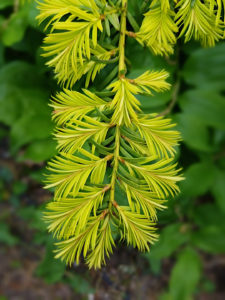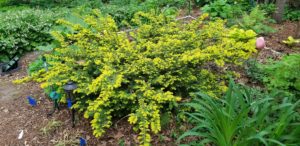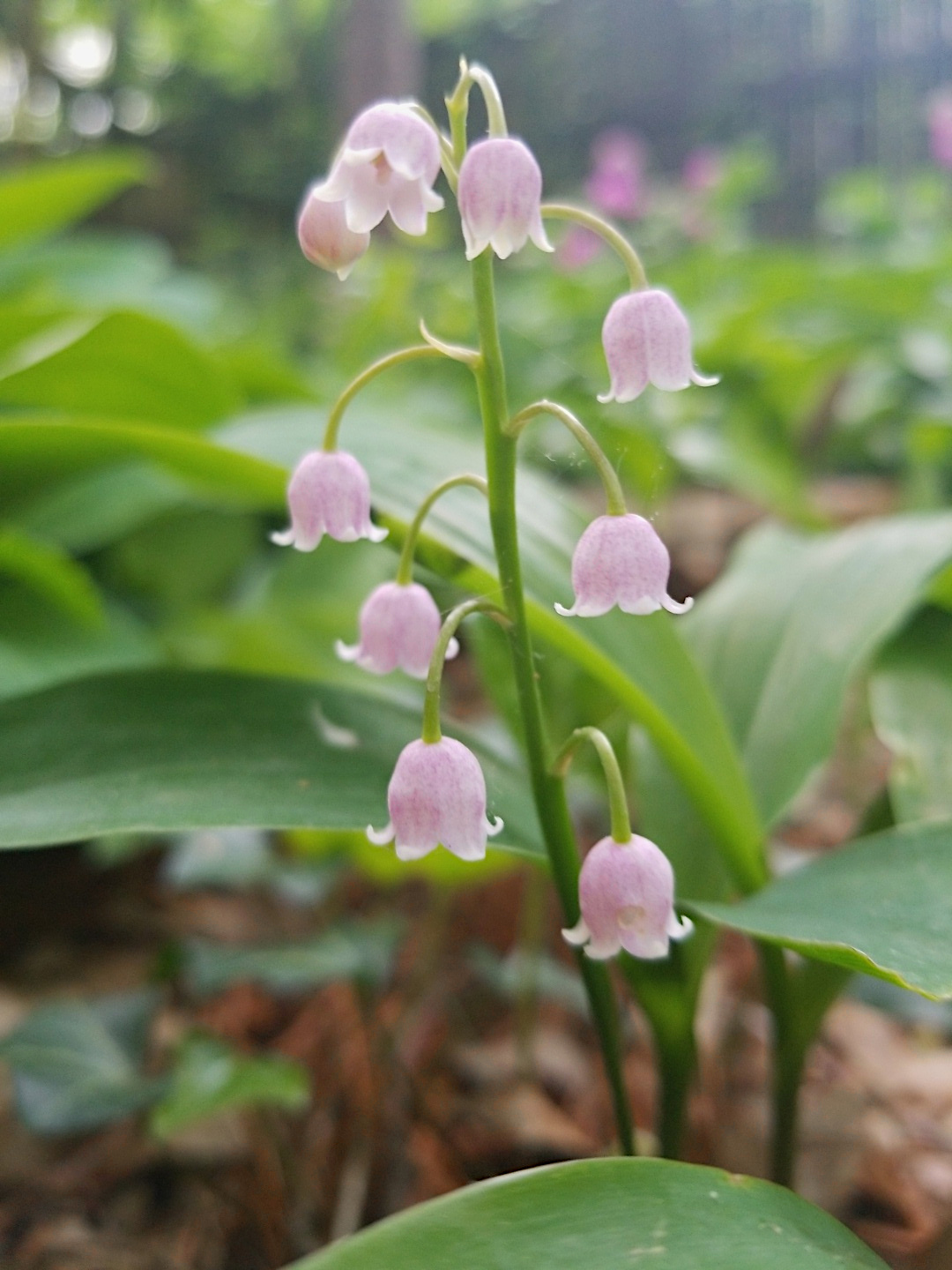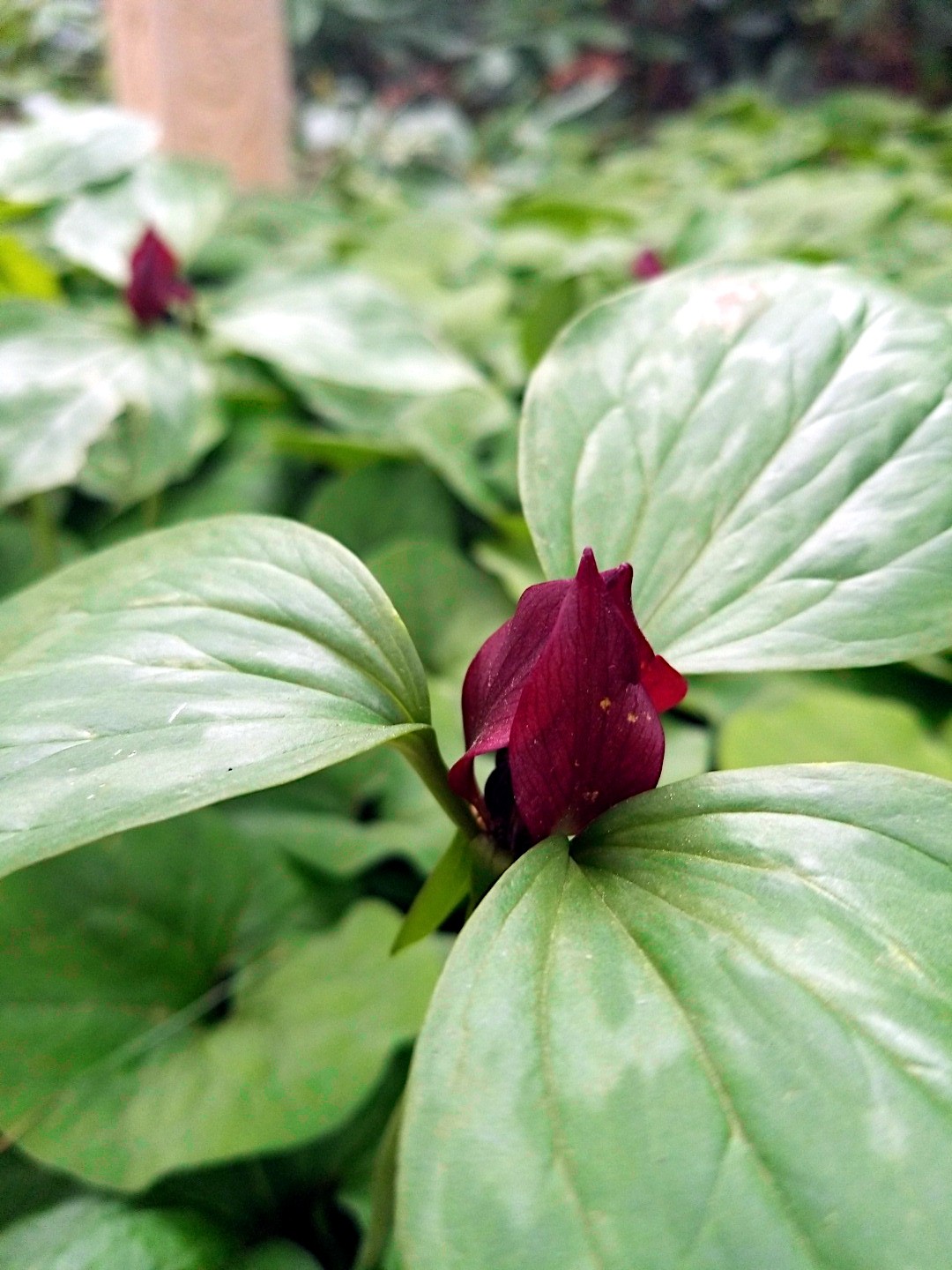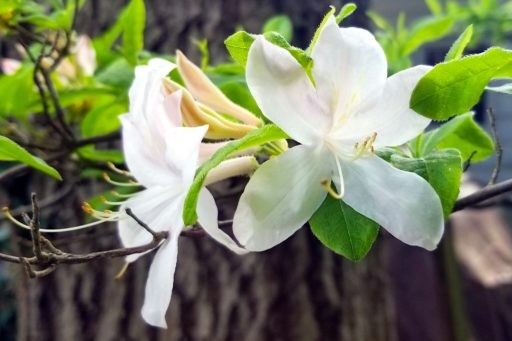But when that yellow does come out, it pops! I really like that flush of new growth in the spring.
I bought them both in 2″ square band pots, and they’re both big — maybe six and eight feet wide now? They’ve certainly grown well!
Last year this one acted as a support for Aristolochia clematitis; the swallowtails were thrilled!
Sorry about the irrigation pipe and marking flags in the shot. You get to see the garden, nits and all!




